Fascinating Ancient History Of Fingerprints
A. Sutherland - AncientPages.com - Fingerprints have been a source of people's great fascination and can be traced back to ancient times.
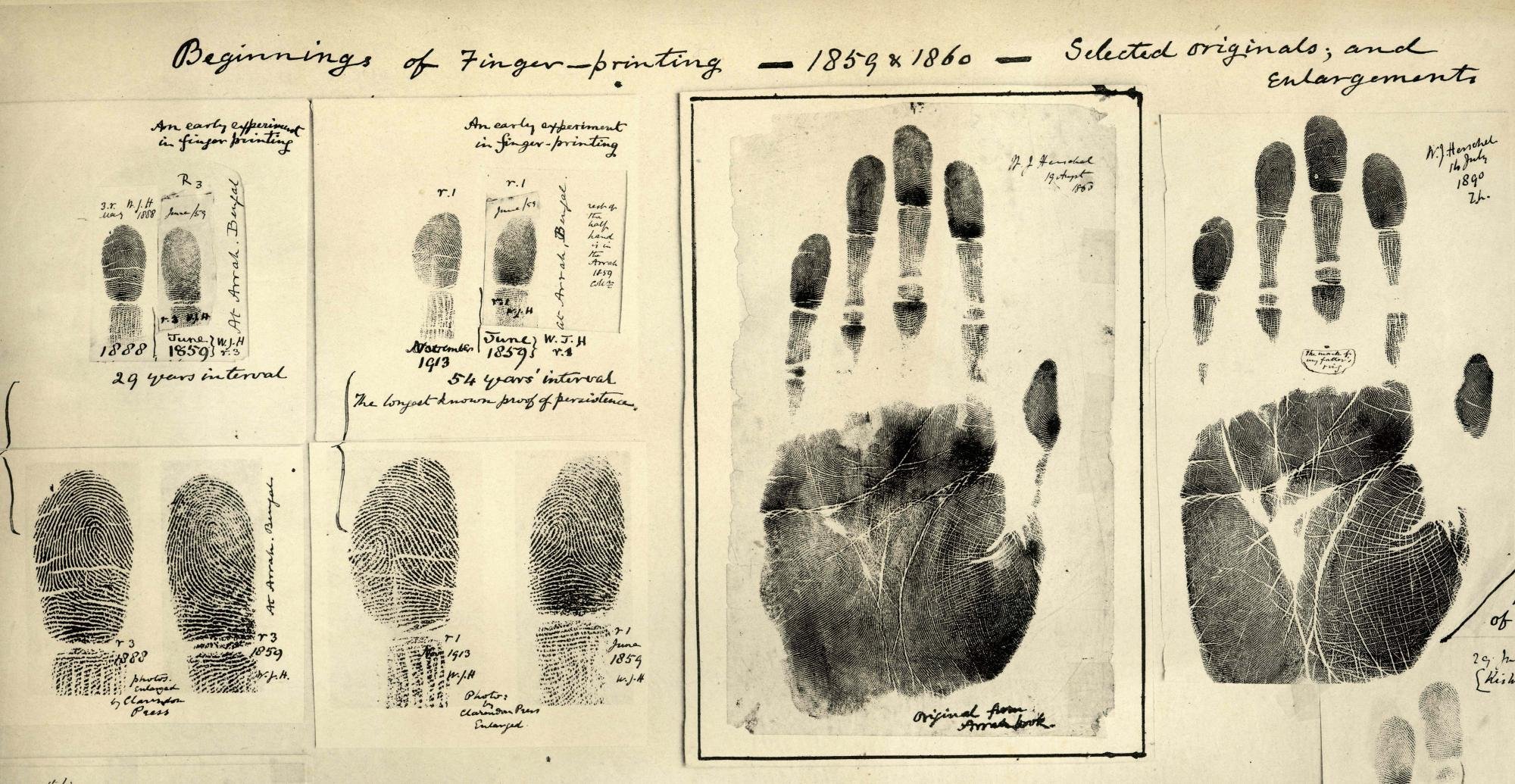 Handprints and fingerprints made by W. J. Herschel. Public Domain
Handprints and fingerprints made by W. J. Herschel. Public Domain
It is not easy today to establish whether the fingerprints were placed on the artifacts, walls, and documents intentionally or coincidentally.
The earliest records of fingerprints are dated to 7,000 BC and originate from Jericho, near the Jordan River in the West Bank of the Palestinian territories. Neolithic bricks from this ancient city contain thumbprints of ancient bricklayers, as mentioned in K. M. Kenyon's book "Archaeology of the Holy Land."
In this ancient city, bricks were found imprinted by pairs of thumbprints of the bricklayer who built a house. Circa 3,000 BC, in Mesopotamia, people placed fingerprints on clay tablets to confirm business transactions. In constructing the king's storehouse, each brick was purposely provided with a "digital impression" as finger imprints.
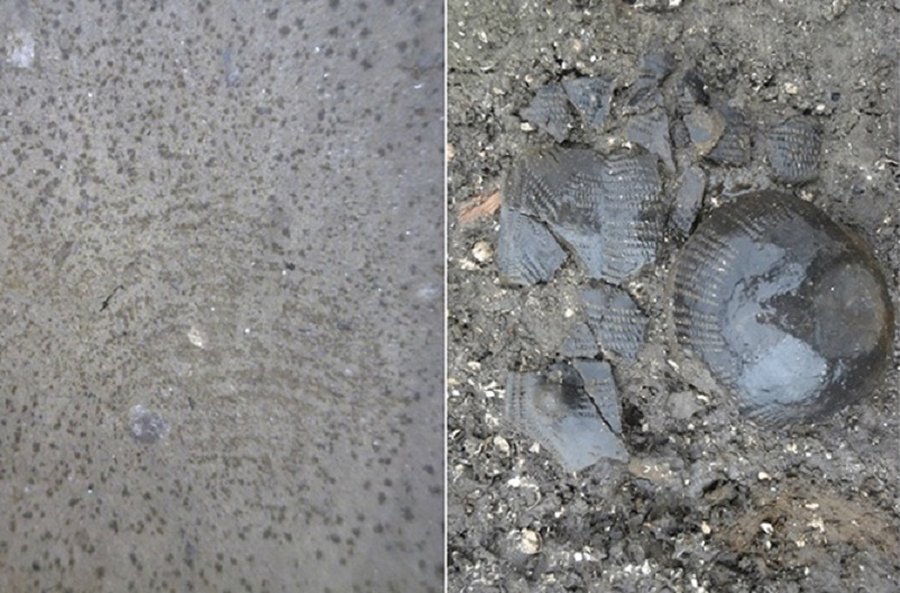 Left: The 5,500-year-old fingerprint and Right: the funnel beaker as it was unearthed. Credit: Line Marie Olesen/Museum Lolland-Falster.
Left: The 5,500-year-old fingerprint and Right: the funnel beaker as it was unearthed. Credit: Line Marie Olesen/Museum Lolland-Falster.
In ancient Egypt, a similar procedure was used to construct royal buildings. The walls of Egyptian tombs are decorated with fingerprints.
Ancient artifacts containing carvings of fingerprints, dated to 3,000 BC, were discovered in Northwest Europe at New Grange on the coast of Ireland and in Brittany, France.
Many artifacts discovered in burial chamber passages and tombs from this period were covered with fingerprint ridges. About one year ago, archaeologists unearthed pieces of a 5,500-year-old ceramic vessel from an ancient fjord east of Rødbyhavn near Lolland, Denmark, and there was an old fingerprint on it.
People lived in Nova Scotia for more than 11,000 years, as confirmed by written history and oral tradition. For example, the outline of a hand with etchings representing the ridge patterns on fingertips was once scratched into the slate rock beside Kejimkujik Lake in Nova Scotia.
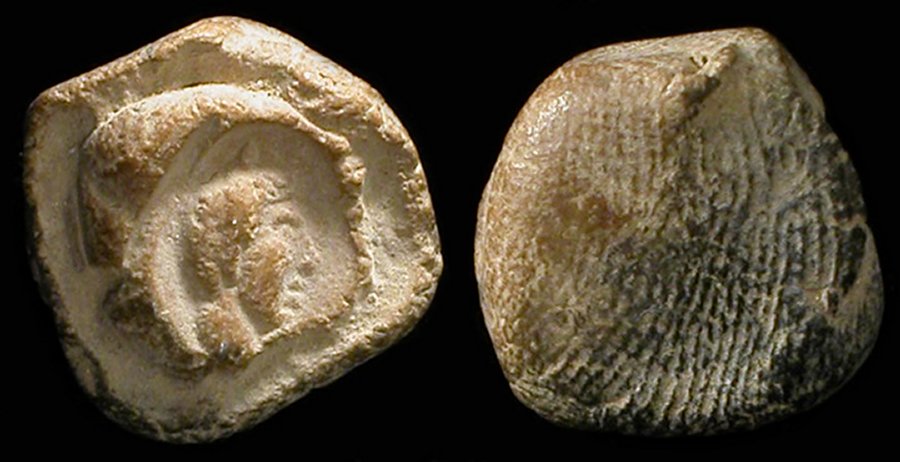 In the Greek and Roman periods, there have been found Many clay bullae have been unearthed during the excavations in the ancient ruins in Greece and various Roman sites. Photo via Forensics
In the Greek and Roman periods, there have been found Many clay bullae have been unearthed during the excavations in the ancient ruins in Greece and various Roman sites. Photo via Forensics
Prehistoric cave artists and pot makers used to "sign" their works with an impressed finger or thumbprint. A similar tradition was widely used by artisans who put fingerprints on ancient Babylonian seals, clay tablets, and pottery.
Archaeologists found fingerprints on Greek and Chinese pottery, bricks, and tiles in Babylon and Rome and imprints of fingers embossed on 6,000-year-old Chinese ceramics.
According to a Chinese historian, Kia Kung-Yen, who lived in the Tang period, there was a custom to put thumbprints on clay seals and inked fingerprints to "sign" legal documents regarding loans, debts, and contracts.
The oldest " survived " documents are dated to the 3rd century BC. The imprint, deeply embedded in the seal, is a significant identifying mark.
Ancient records from 14th century Persia inform that one government official, a physician, made an important discovery. Namely, he observed that no two fingerprints were exactly alike! As we see, he was one of many to attend to the fingerprints' unique feature.
Chinese records dating to the Qin Dynasty (221-206 BC) include details about using handprints as evidence during burglary investigations, and clay seals with friction ridge impressions were commonly used during both the Qin and Han Dynasties (221 BC - 220 AD). Could it mean that the ancient Chinese were fully aware of the uniqueness of a fingerprint?
If this is so, there is strong evidence that the Chinese knew the importance of the individuality of fingerprints a very long time ago.
Sir William James Herschel (1833 – 1917), whose father and grandfather were astronomers, decided to choose another career. He joined the East India Company and began his work as a British civil servant in India.
More and more interested in fingerprinting, Herschel made a variety of experiments and soon realized that a person's fingerprints do not change over time! In 1916, one year before he died, Sir Herschel published his work entitled "The Origin of Fingerprinting."
In "Advances in fingerprint technology," edited by Henry C. Lee R.E. Gaensslen, it is said that "Henry Faulds (1843-1930), a medical missionary for the Church of Scotland, was very interested in fingerprints. In one of his experiments, he removed the skin from the fingers (!) of his patients after fingerprinting them."
When the skin regrew on the fingertips, he fingerprinted them once more. He noted that the ridge detail was the same as before the skin was removed.
He concluded that fingerprint patterns were variable, but ridge detail was immutable.
Written by – A. Sutherland AncientPages.com Staff Writer
Copyright © AncientPages.com All rights reserved. This material may not be published, broadcast, rewritten or redistributed in whole or part without the express written permission of AncientPages.com
Expand for referencesReferences:
Hawthorne, Fingerprints: Analysis and Understanding
Castronovo, The Oxford Handbook of Nineteenth-Century American Literature
M, Specter, The New Yorker
Iranian.com
More From Ancient Pages
-
 Last Of The Giant Camels And Archaic Humans Lived Together In Mongolia Until 27,000 Years Ago
Fossils | Mar 24, 2022
Last Of The Giant Camels And Archaic Humans Lived Together In Mongolia Until 27,000 Years Ago
Fossils | Mar 24, 2022 -
 The Chinese Nostradamus And His Striking Predictions
Featured Stories | Sep 15, 2018
The Chinese Nostradamus And His Striking Predictions
Featured Stories | Sep 15, 2018 -
 Unique Chachabamba Complex Hidden In Peruvian Forest Reveals Its Secrets
Archaeology | Feb 7, 2019
Unique Chachabamba Complex Hidden In Peruvian Forest Reveals Its Secrets
Archaeology | Feb 7, 2019 -
 Famous Viking Warrior Eric “Bloodaxe” Haraldsson: King Of Norway
Featured Stories | Sep 29, 2016
Famous Viking Warrior Eric “Bloodaxe” Haraldsson: King Of Norway
Featured Stories | Sep 29, 2016 -
 Archaeologists Have Discovered A Mummy Wrapped In Gold – Here’s What It Tells Us About Ancient Egyptian Beliefs
Featured Stories | Feb 7, 2023
Archaeologists Have Discovered A Mummy Wrapped In Gold – Here’s What It Tells Us About Ancient Egyptian Beliefs
Featured Stories | Feb 7, 2023 -
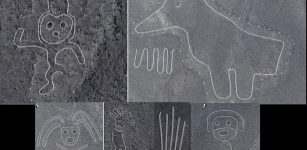 168 Unknown Geoglyphs Discovered In The Nazca Desert By Drones
Archaeology | Dec 19, 2022
168 Unknown Geoglyphs Discovered In The Nazca Desert By Drones
Archaeology | Dec 19, 2022 -
 Caribbean Silk Cotton Tree And Its Dangerous Spirits In Myths And Legends
Featured Stories | Jan 29, 2024
Caribbean Silk Cotton Tree And Its Dangerous Spirits In Myths And Legends
Featured Stories | Jan 29, 2024 -
 Virginia’s Mysterious Vault With Remarkable Secret Ancient Documents Still Raises Many Questions
Featured Stories | Oct 17, 2024
Virginia’s Mysterious Vault With Remarkable Secret Ancient Documents Still Raises Many Questions
Featured Stories | Oct 17, 2024 -
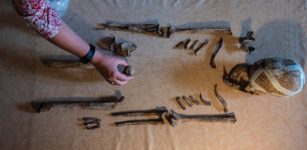 Who Was The The Mysterious Lady Of Bietikow And What Had She In Common With Ötzi Iceman?
Archaeology | Nov 6, 2020
Who Was The The Mysterious Lady Of Bietikow And What Had She In Common With Ötzi Iceman?
Archaeology | Nov 6, 2020 -
 Unusual 6,000-Year-Old Gold Objects Discovered In Hungarian Tombs – More Mysterious Conical Hats?
Archaeology | Mar 25, 2021
Unusual 6,000-Year-Old Gold Objects Discovered In Hungarian Tombs – More Mysterious Conical Hats?
Archaeology | Mar 25, 2021 -
 Tribe Recalls Ancient Contact With An Extraterrestrial In The Amazon Jungle And A Strange Beam Of Light
Ancient Mysteries | Jun 25, 2020
Tribe Recalls Ancient Contact With An Extraterrestrial In The Amazon Jungle And A Strange Beam Of Light
Ancient Mysteries | Jun 25, 2020 -
 Neolithic Ceramics Reveal Dairy Processing From Milk Of Multiple Species
Archaeology | Mar 15, 2023
Neolithic Ceramics Reveal Dairy Processing From Milk Of Multiple Species
Archaeology | Mar 15, 2023 -
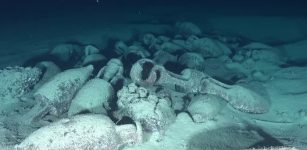 Three Roman Shipwrecks Discovered Off Tunisian Coast – One Is 2,000-Year-Old
Archaeology | Jun 9, 2023
Three Roman Shipwrecks Discovered Off Tunisian Coast – One Is 2,000-Year-Old
Archaeology | Jun 9, 2023 -
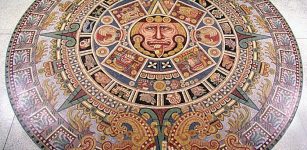 Aztecs’ Five Suns Creation Myth And Prophecy
Aztec Mythology | Jul 18, 2018
Aztecs’ Five Suns Creation Myth And Prophecy
Aztec Mythology | Jul 18, 2018 -
 DNA Unravels Mysteries Of The Crannogs, Ancient Artificial Islands Older Than Stonehenge
Archaeology | Oct 10, 2022
DNA Unravels Mysteries Of The Crannogs, Ancient Artificial Islands Older Than Stonehenge
Archaeology | Oct 10, 2022 -
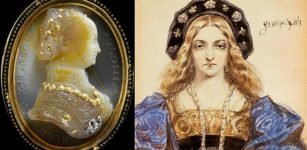 Bona Sforza – Ambitious Queen Of Poland Was Betrayed And Murdered
Featured Stories | Jan 21, 2019
Bona Sforza – Ambitious Queen Of Poland Was Betrayed And Murdered
Featured Stories | Jan 21, 2019 -
 Unique Medieval Horsemen Sculptures Made By Unknown Creators In India – Puzzling Discovery In The Himalayas
Archaeology | Oct 23, 2017
Unique Medieval Horsemen Sculptures Made By Unknown Creators In India – Puzzling Discovery In The Himalayas
Archaeology | Oct 23, 2017 -
 Royal Colossi Fragments, Mud Brick Wall And Pottery Uncovered In Matariya, Egypt
Archaeology | Dec 4, 2019
Royal Colossi Fragments, Mud Brick Wall And Pottery Uncovered In Matariya, Egypt
Archaeology | Dec 4, 2019 -
 Riddle Of An Ancient Underground City No-One Thinks Exist – Symbol For A Spiritual Quest – Part 2
Ancient Mysteries | Sep 18, 2019
Riddle Of An Ancient Underground City No-One Thinks Exist – Symbol For A Spiritual Quest – Part 2
Ancient Mysteries | Sep 18, 2019 -
 Ancient Secrets Of Mysterious Dead Sea Scrolls And Eastern Papyri Revealed By Handwriting Analysis
Archaeology | Oct 18, 2022
Ancient Secrets Of Mysterious Dead Sea Scrolls And Eastern Papyri Revealed By Handwriting Analysis
Archaeology | Oct 18, 2022
